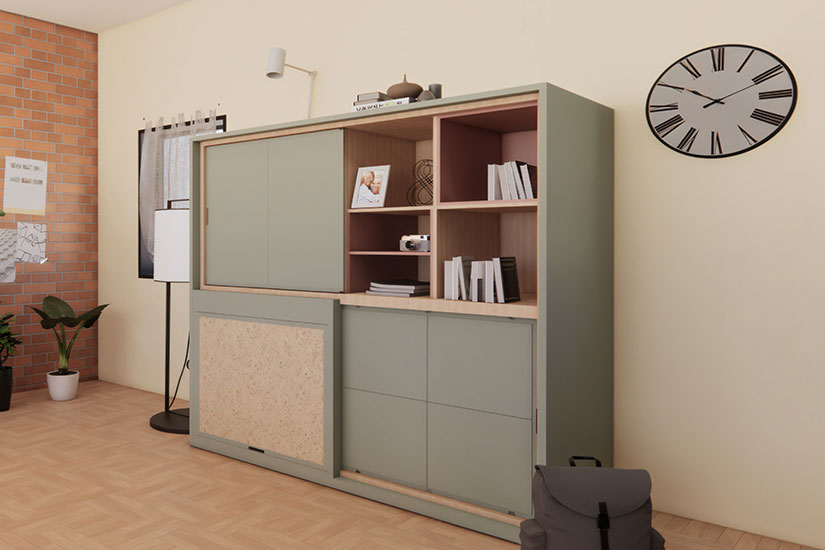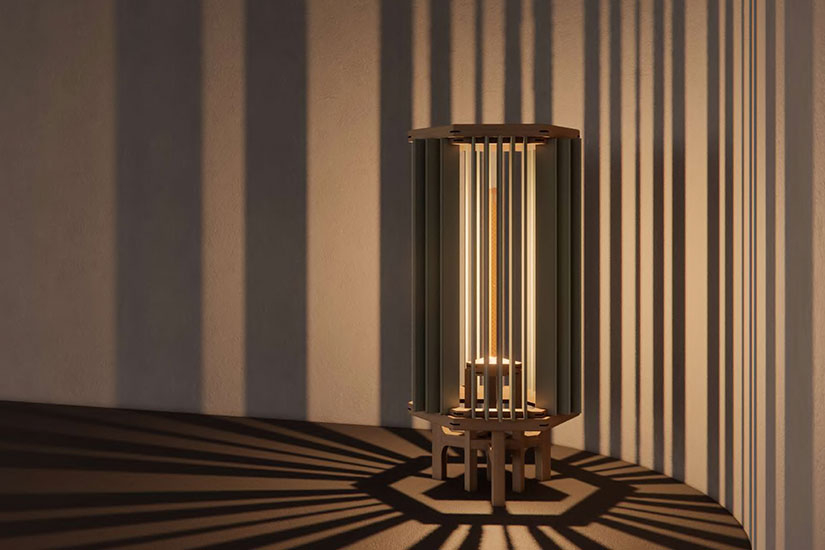
Congratulations to the winners of the 2025 FORM Student Design Competition!
The 2025 FORM Student Innovation Competition invited students to design a furniture piece interpreting the theme of “Designing for Wellbeing.”
Here are the profiles of our Canadian FORM 2025 Winners:
Stacy-Ann Matthews & Tara Hunt
Stacy-Ann Matthews and Tara Hunt, Bachelor of Interior Design students at Yorkville University in Ontario, took second place in the 2025 FORM Student Innovation Competition.
Their project, Noyes Balance, perfectly embodies the competition’s “Designing for Well-Being” theme, and stood out amongst nearly 200 submissions. The key to their success? Their creative partnership, which brought together Stacy-Ann’s bold, imaginative, and innovative side with Tara’s functional and intuitive approach to maximise the user experience.
Stacy-Ann Matthews (SAM)

Before beginning her bachelor’s degree in interior design at Yorkville University, Stacy-Ann spent 18 years at Stanford Downey Architects Inc., first as a junior technologist and later as a senior designer. Working closely with interior designers and witnessing how they infused intention and emotion into each space, she knew this was the path she wanted to follow. Though hesitant to return to school after several years in the workforce, Stacy-Ann took the plunge in 2020 and has enjoyed every moment since.
Passionate about storytelling, design, and art, Stacy-Ann is fascinated by how creativity can serve as a vehicle for identity. She enjoys observing how people interact, how they use tools—simple or complex—and how their choices carry meaning. “The beautiful, the messy, the imperfect... it’s the stories behind it all that move me. I’m also looking to move away from traditional design norms, because not everyone fits into the same mould,” says Stacy-Ann. For her, each design is a story in itself, worthy of being heard and told on its own terms.
Stacy-Ann hopes to successfully complete her bachelor’s degree and continue creating projects that resonate with people, are rooted in real stories, and challenge the status quo in design. She even plans to open her own design studio one day.
Tara Hunt

With a BA in communications and cultural studies from the University of Calgary, Tara began her career as an author, speaker, marketing and branding strategist, graphic designer, and entrepreneur. Exhausted and disillusioned, she decided in 2021 to shift her focus toward something more tangible, creative, and fulfilling. She found the courage to go back to school and begin a bachelor’s degree in interior design at Yorkville University.
“I’m passionate about designing spaces that promote well-being, sustainability, and inclusivity, and I’m interested in how people interact with their environment,” says Tara. Interior design allows her to draw on all the skills and knowledge she has acquired throughout her career and during her second degree, to design interiors that are functional, aesthetically pleasing, equitable, and deeply connected to their users.
Having completed her bachelor’s degree, Tara is currently seeking her first position at a commercial design firm that values a rigorous, research-based approach and meaningful projects. She also hopes to take the National Council for Interior Design Qualification (NCIDQ) IDFX exam next year and eventually earn LEED certification.

Noyes Balance: a design that combines well-being and interactivity
Noyes Balance was designed using the principles of neuroaesthetics, which aim to create spaces and objects that are not only beautiful but also emotionally and psychologically supportive. The furniture is at once playful, functional, and deeply thoughtful. It incorporates sliding and mobile elements inspired by the traditional “15 Puzzle” game—from which the piece takes its name, in homage to the puzzle’s creator, Noyes Chapman—to allow users to adapt their working environment to suit their needs. The aim? To promote visual harmony while offering a sense of control and emotional balance.
A rigorous and inspiring process
Noyes Balance took about three months to develop. The students began by exploring materials, ordering several samples of Formica® and FENIX™ products. These materials inspired them and helped guide their aesthetic choices. At the same time, they conducted in-depth research into well-being in design, drawing from their own experience as students working from home in small spaces.
Each stage of the project followed a structured process: pre-design, programming, sketches, prototyping, concept development, material selection, and finally, technical documentation. Throughout, they exchanged ideas, sketched prototypes, tested combinations, and fine-tuned every detail—from the colour palette to the way the doors glide—until their core concept took shape.
Daring to take the plunge
Stacy-Ann and Tara had known about the FORM Student Innovation Competition for several years but never found the right time to take part due to busy schedules. This year, they finally decided to take up the challenge as a duo—and their only regret is not doing it sooner!
“There’s no perfect time. You just have to go for it. Doing it as a team is a real plus. It gives you a different perspective, lets you share tasks, and provides support during moments of doubt, which can make all the difference," says Stacy-Ann. "It’s an incredibly rewarding experience, and this project gave us the chance to put into practice everything we’ve learned during our studies,” says Tara.
The two students are extremely proud to have stood out in the competition and worked on a project that inspired them and pushed them beyond their limits.
Grace Luong

A fourth-year architecture student at the University of Waterloo, Grace is passionate about designing spaces that are not only functional but also meaningful to their users. Through her university studies, she has had the opportunity to live, work, and travel abroad, deepening her appreciation of design across diverse cultural contexts.
For Grace, architecture is a deeply human discipline, an art where the creative process gives rise to objects and spaces that respond to people's needs. She especially enjoys working with raw materials to create something expressive and meaningful, which fuels her strong interest in woodworking and furniture design. She believes in the narrative power of design and its ability to tell stories while serving practical purposes.
Guided by values of sustainability and human-centred design, Grace plans to pursue a master’s degree after completing her bachelor’s, with the goal of joining an architecture firm that shares these principles. She envisions working in a setting that values the social impact of design as highly as its aesthetic quality.

Solarium: A Sun-inspired lamp that fosters a sense of well-being
Solarium is a lamp with a design rich in meaning, rooted at the intersection of Grace’s three passions: furniture design, woodworking, and music. The use of 36 black ebony wood accents—chosen for both its aesthetic and symbolic qualities— is a reference to the 36 black keys of a piano.
At the core of her creative process is a clear ‘why’: an intention that goes beyond mere function. For this project, she set out to create something meaningful that challenges minimalist, standardised design by reintroducing ornamentation and reflection. The FORM competition’s well-being theme provided an ideal starting point.
By planning ahead, Grace was able to give herself the time and space to fully explore ideas during the ideation phase. This period of reflection allowed concepts to mature organically until a clear direction emerged. Once that intuitive spark took shape, the sketches, iterations, and construction followed quickly, culminating in the design of Solarium.
The lamp’s vanes cast rays of light that create a warm, enveloping glow on the floor, and earn it its name. The lamp is a tribute to natural light, which this young architect sees as inseparable from well-being.
“I love that the piece can first be appreciated for its craftsmanship and then, with a little context, resonate on a deeper level. Perhaps this multi-layered richness is what sets it apart,” says Grace Luong.
Taking part in the competition was also a chance for Grace to broaden her creative vision. Initially focused on working with wood, she was challenged to incorporate Formica® brand and FENIX™ surfaces into her design, prompting her to think more deliberately about colour and finishes, and ultimately evolving her creative process.
Grace is proud that her work stood out in the competition, and she encourages other students who might be on the fence to take the plunge and submit a design next year.
“Go for it! Brands like Formica genuinely support student success, and competitions like this are a great opportunity to grow. Don’t be afraid to experiment or trust your ideas. It’s all about pushing yourself and learning along the way,” she says.
